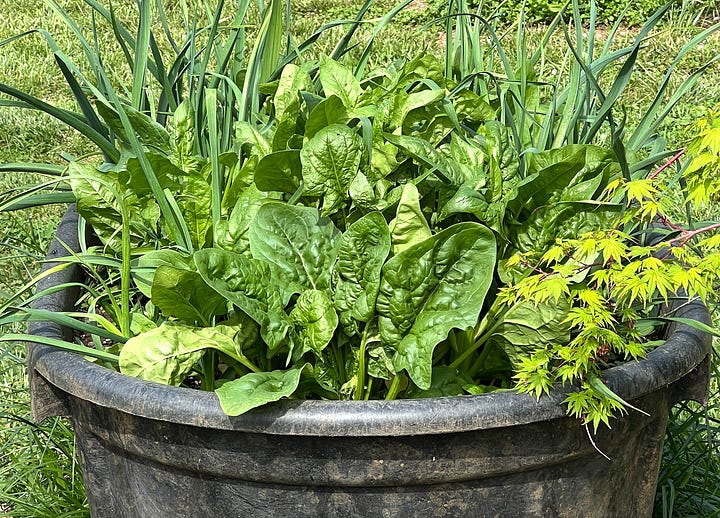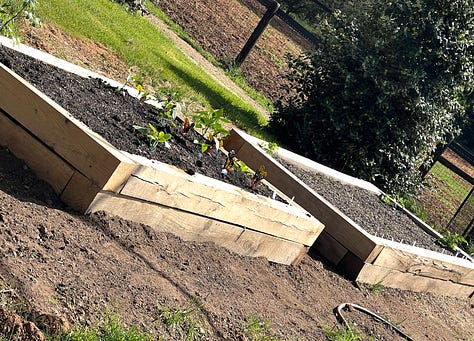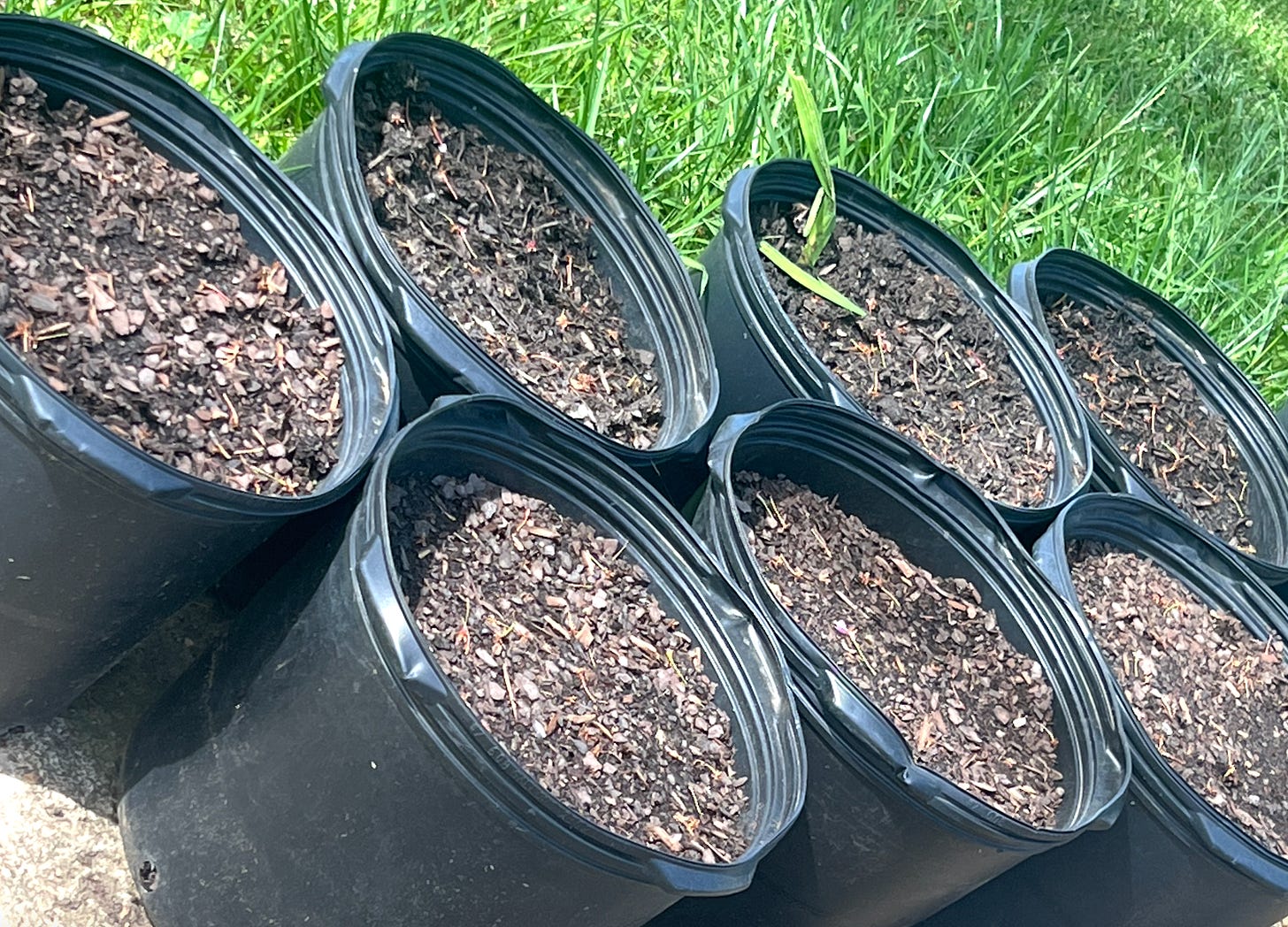
Homesteading: A Journey of Self-Sufficiency
It doesn't take 40 acres, mule and a plow to start

Homesteading (or “Farmsteading”) is a journey of self-sufficiency, and a path that may or may not lead to a life off-the-grid. It's about building or rebuilding a home and/or farm, and learning to live off the land. It may be about teaching those skills to others, such as family and friends. Homesteading often involves barter of food, seeds, resources and time. Whether you're practicing on a small scale- like cultivating a hydroponic garden in your apartment or keeping three hens in the backyard- or on a larger scale, the sense of accomplishment and empowerment is immense. So, embrace this fulfilling and empowering work - you have the power to do it!
During WWII, victory gardens provided Americans and soldiers with much of their food. This movement was led by the government, but was immediately abandoned post-war as soldiers returned to the farm, and as the economy needed a reboot. Modern co-op gardens gained popularity in the United States in the 1960s and 1970s, led by a back-to-the-earth movement. Self-sufficiency movements in the 1990s and 2000s began to apply the concept to urban and suburban settings. Fast forward to the present and now the off-the-grid movement and regenerative farming techniques are sweeping the nation. Whatever the name, homesteading offers both a respite from “modern” life as well as healthier alternatives for living. One doesn’t need 40 acres, mule and a plow to practice homesteading. An old bucket and some seeds may be all that one needs to start.


As our nation grapples with its flaws, as we seek meaning in our existence, and as our food systems become increasingly industrialized and synthetic, the need for healthier sources of food becomes self-evident. The truth is that the American diet is largely composed of ultra-processed foods, which by and large are detrimental to health. By homesteading. By becoming a part of your own food system which nourishes your body daily, you're creating a positive feedback loop. This will lead to a healthier life and a healthier body. The daily rituals of homesteading will not only nourish your body but also soothe your soul. Furthermore, the daily routines of homesteading are a source of low-impact exercise, which is extremely healthy. Particularly as we age.
There are many sources for information on homesteading, from building or repairing a house, off-the-grid systems, cooking, growing food, animal husbandry, politics, securing energy sources, and homeschooling – to list a few obvious ones. Homesteading is one way to explore the unexplored -without leaving our domicile. Of course, the internet has become the “go-to” for such information, but as one develops the skills needed to homestead, the truth is that it takes a lifetime to really establish relationships with local conditions, including the land, soil, water, tools, seeds, plants, animals and weather. This is a lifetime adventure in learning and doing.
For instance, this year we are going to plant corn as well as wheat. Corn is a crop that we have tried in the past, but our efforts have been stymied by the local deer population. These creatures enjoy nothing more than sleeping in a patch of corn and eating that crop from the inside out. One year, we discovered that overnight - the beloved corn patch had been hollowed out in the middle from the local deer enjoying a midnight snack in between naps. But this year, we will plant near the horses and place a motion-activated light nearby.
Jill makes bread from organic wheat berries, which she grinds herself using a Vitamix blender. So this year we are also going to try to grow our own wheat. That will require that we experiment with drying techniques after harvest, as well as threshing (the process of separating the wheat from the stalk). I am sure that our biggest issue will again be deer. They truly are the bane of our homesteading efforts. “Rats on sticks” is a phrase that resonates with me these days.
Homesteading is not confined to a specific location. It can happen anywhere, from an indoor vegetable garden to a potted parsley plant at the doorstep, to making preserves from locally sourced fruits. Homesteading is about reclaiming control of your life, about taking back the reins and shaping your own destiny, food supply and life. Shortening and simplifying the supply chain.
Homesteading is often a quiet act of rebellion. By homesteading, one can push back against the notion of our over-commercialized economy, which requires “coin” to survive. The idea that our food doesn’t have to be of unknowable origin and over-processed with chemical additives, pesticides, and herbicides is appealing on all sorts of levels. We have friends that are into the foraging movement, which they mostly practice on state and Federal parklands. This doesn’t require land or investment. Another great way to be off-the-grid and independent.
Spring is the best time to immerse yourself in a new homesteading adventure. Start small or large as time, energy and resources dictate. You can get as creative or as analytical as your mind desires. This is your life and your dreams.
Homesteading is healthy for the mind, body, and soul. So dig in and enjoy the journey.



"Who is Robert Malone" is a publication that relies on reader support. Please consider subscribing to support our work.
This week, I planted basil in recycled nursery pots. In summer, we will grind the basil leaves, garlic, and olive oil to make pesto (and for use as seasoning in other Italian food dishes). Then, we freeze this mix in freezer baggies for year-round use. When we defrost, we add the parmesan cheese and nuts to the pesto, which means we use up less freezer space.
Jill’s basic Pesto Recipe (scale up for more leaves)
2 cups packed fresh basil leaves - remove the stems. If freshly rinsed - shake off the water and pat dry with a towel to remove excess liquid. If the basil was picked fresh, be sure to look on both sides of the leaves for bugs…
1/2 cup extra virgin olive oil
3 cloves garlic, minced (about 1 tablespoon)
1/4 teaspoon salt, or more to taste
1/8 teaspoon white pepper, or more to taste
1/8 teaspoon nutmeg
******
1/2 cup finely grated Romano or Parmesan cheese. For a slightly different flavor, use guerre (about 2 ounces).
1/3 cup pine nuts (or chopped pecans)
Directions:
Pulverize the basil, garlic, salt, nutmeg and pepper with the olive oil in a blender. Add more or less oil and leaves, as needed. Leaves should be finely ground but not a “paste”.
Place the mix in a bowl and add the cheese and nuts. Stir by hand.
Our blueberry plants are doing well with lots of blooms this spring. These plants are great for decorative use as well. This is a dwarf variety, located just outside our front doorstep. Jill will freeze the fruit we don’t eat for later use in the year.
Mulberries are setting - as a fruit, they are pretty tasteless, but the birds love mulberries and the bees love the spring flowers. Our naturalized trees around the farm produce hundreds of pounds of fruit a year (I only wish the peaches did so well)!

















My husband and I were back-to-basics enthusiasts.
My crowning achievement was a Thanksgiving mega dinner with guests where the conversation wound up talking about the food.
Turned out everything but the turkey had been grown in our own back yard!🙂
Amazing garden! My husband & I had a beautiful, & healthy garden years ago, back in the mid-1990's, & he always prepared the soil, planted the seeds, & Iris flowers, & our harvest's were wonderful. But, he passed in 2012, & I had to sell our 10 acres/house three years after he passed. I took care of weeding, & checking our plants daily since the deer always snacked on plants. We grew string beans; broccoli & cauliflower; watermelon, cucumbers & squash. Our Zuccini plants thrived, as well as our spaghetti squash. I do miss gardening together. Now, my Daughter is learning how to garden, & as of yesterday, we transplanted a bunch of seedlings into Solo cups, just until the weather warms up & she now has time to plan her garden patch. I'm so proud of her, & she shows a great interest in growing food for the family. She has cucumbers, tomatoes, chili pepper plants (seeds from store peppers), & watermelon, & of course, Colorado wildflower seeds. I helped her transplant the baby seedlings & it was fun to see her grow & learn the wonderful life of growing plants!